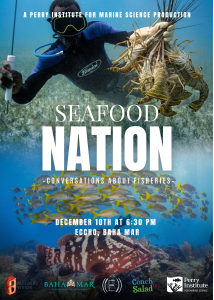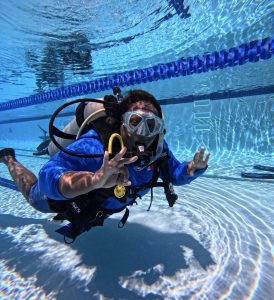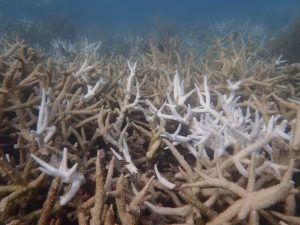Ocean Expert Exchange with Will Greene
In this webinar, PIMS Research Associate Will Green shows us how he uses cutting-edge camera and computer technology to create 3-dimensional and 2-dimensional models of coral reefs. Specifically, Will:
- Explains how the process works (both underwater and on a computer)
- Demonstrates the ways the technology is used for scientific research and for educating the public.
PIMS is especially interested in how the models, which are created with a resolution of about 0.5 milimeters, can be analyzed by researchers to learn about the structural complexity of reefs and which organisms blanket the surface of the reef. Moreover, when data is collected at the same site over time, these models can show us how the reef changes and adapts down to the coral polyp scale. These “digital copies” of reefs essentially preserve exactly what a reef looked like at the time it was photographed, and can be re-analyzed in the future as our research evolves.Using the 3D models for education is another incredibly important use of the technology. They’re a useful tool to teach future scientists how to identify different species of coral and understand where they grow. The reefs can also be visualized in Virtual Reality, allowing people to explore the reefs from at home and gain a whole new appreciation for their importance and beauty!

Build a Coral Reef for the Holidays | PIMS x Partanna
PIMS is partnering with Partanna to build a 100m² carbon-negative reef. Rick Fox is matching donations up to $25k. Help us build a sanctuary for the future.

“Seafood Nation” Documentary Premiere Explores the Heart of Bahamian Culture and the Future of Fisheries
NASSAU, The Bahamas | December 5, 2025 – From the bustling stalls of Potter’s Cay to family kitchen tables across the archipelago, seafood is far more than just sustenance in

PIMS and Disney Conservation Fund Partner to Train 19 Government Divers
PIMS dive training in Nassau strengthened national coral restoration capacity across government agencies. Bahamas Dive Training Builds National Coral Restoration Capacity Last fall, between the months of September and October,

Florida’s Coral Reef Crossed a Line: What Functional Extinction Really Means for Elkhorn and Staghorn Corals
Reefs didn’t just bleach. They functionally vanished in one summer. A new Science study co-authored by researchers from the Perry Institute for Marine Science (PIMS) has found that Florida’s two

Q&A: Understanding the IDC Course at PIMS with Duran Mitchell
A former aquarist turned coral conservationist, Duran is passionate about understanding how all marine life connects. PIMS & IDC: Empowering New Dive Instructors for Marine Conservation PIMS & IDC: Empowering

Forbes Shines a Spotlight on Coral Reef Restoration in the Caribbean
When Forbes highlights coral reef restoration, it signals something powerful: the world is paying attention to the urgent fight to protect reefs. And solutions are within reach. Recently, Forbes featured Dr. Valeria


